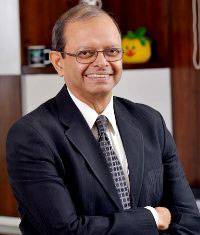Spectacular celebration at the world’s premier technology bourse the NASDAQ, had the topicality of digital theme and the mood of optimism, exciting the imagination of all

It’s always exciting to chair a big industry event and the opportunity to be the Program Chair for NASSCOM’s first ever event outside India, “Collaborating for a Digital Tomorrow”, in New York City was obviously too good to be missed. But what was to prove the icing on the cake was the spectacular celebration at the world’s premier technology bourse the NASDAQ.
A select group of NASSCOM leadership and CXO delegates for our Summit from key US firms were given the unique opportunity to ring the closing bell at the Exchange. After a few speeches were made and multiple photographs taken, we marched out of the NASDAQ building onto Broadway and the ever-bustling Times Square and saw our own images, larger than life projected on the immense NASDAQ pillar in the square–quite an exhilarating event and an amazing end to a landmark industry event.
The two-day collaboration summit itself was unique for three reasons. NASSCOM Leadership Forums in India are always sell-out events but the concern has been that either because of travel distance or interest, the participation of global customers has at best been sparse and the audience consists mainly of Indian industry leaders, analysts and think tanks understanding the new perspectives of service providers. In New York, over eighty per cent of the hundred and fifty plus participants were from large American organisations and with the quality of speakers lined up–from Mckinsey, IDC, NASA and a host of large corporation CIOs, the content was rich and excited the imagination of all. This content proved to be the second unique aspect of the event.
The topicality of the digital theme and the mood of optimism that the word “collaboration” always creates was the third differentiator of this event. From outlining the impact of digital on individuals, corporations and society to articulating the importance of a truly transformational approach to ensure the success of digitalisation programmes, there was a consensus that the work environment and stakeholder satisfaction would keep increasing in future. And for the many naysayers in the country and abroad who have feared that the advent of artificial intelligence and automation could soon result in substantial job losses, the discussions on new jobs created at the intersection of new technologies and processes should have been reassuring.
The millennial generation has the attitude and willingness to be self-managed and have neither the time nor inclination for excessive mentoring or supervision

The jobs theme itself has been a recurring concern in India with every separation in the IT sector in the last few weeks attributed to the deadly triple specters of industry slowdown, visa issues and automation. In an industry that today employs nearly forty lakh people and has built a reputation of professionalism and global standards, it is hardly surprising if one to two per cent are asked to look elsewhere in the performance appraisal season but the ever paranoid press has been indulging in negative hype to the extent that the Government in the form of the IT Minister and IT Secretary have rushed to announce that no job losses were anticipated and indeed, twenty lakh or more new jobs would be created.
What is important for young folks reading this column as well as their families and well-wishers is that it’s time to revisit the fundamentals of skilling for livelihoods. In India, many of us who succeeded in building good careers thanks to our engineering or management degrees in a variety of professions from manufacturing to retail to banking to insurance and of course IT managed to fund opportunities and carve a niche by sheer hard work and some flashes of inspiration. In the next generation of jobs, there will be little or no role for generalists or managers. The millennial generation has the attitude and willingness to be self-managed and have neither the time nor inclination for excessive mentoring or supervision. Traditional supervisory jobs will go away and it will be people with hard skills who will be most in demand in the future. With the scythe of machine learning, artificial intelligence and automation taking traditional repetitive manufacturing and services jobs away at a rapid clip and robotics extending even into operating theatres and hotel front desks. The future jobs will be in truly cognitive areas, which necessitate thinking and non-repetitive actions guided by predictive and prescriptive data analytics. This will need constant learning about what is actually out there in the world of Big Data and automation so that the workplace of the future can be designed for co-working of men and machines. If this sound scary or something out of a sci-fi movie, just visit any high-tech factory in Shenzhen China where the early vision of rows and rows of women hard at work on assembly lines has been replaced by one or two persons supported by multiple low-cost automation devices and sometimes three or four robots supporting the movement of materials and leaving only the intelligent portion of the assembly process to the human being.
Hence, one can only predict that while “collaborating for a digital tomorrow” was the theme of 2017 NASSCOM session, the 2022 edition may feature androids and robotic speakers instead of just humans inviting the human audience to collaborate with them to build the future world. Scary or exciting?
by Ganesh Natarajan